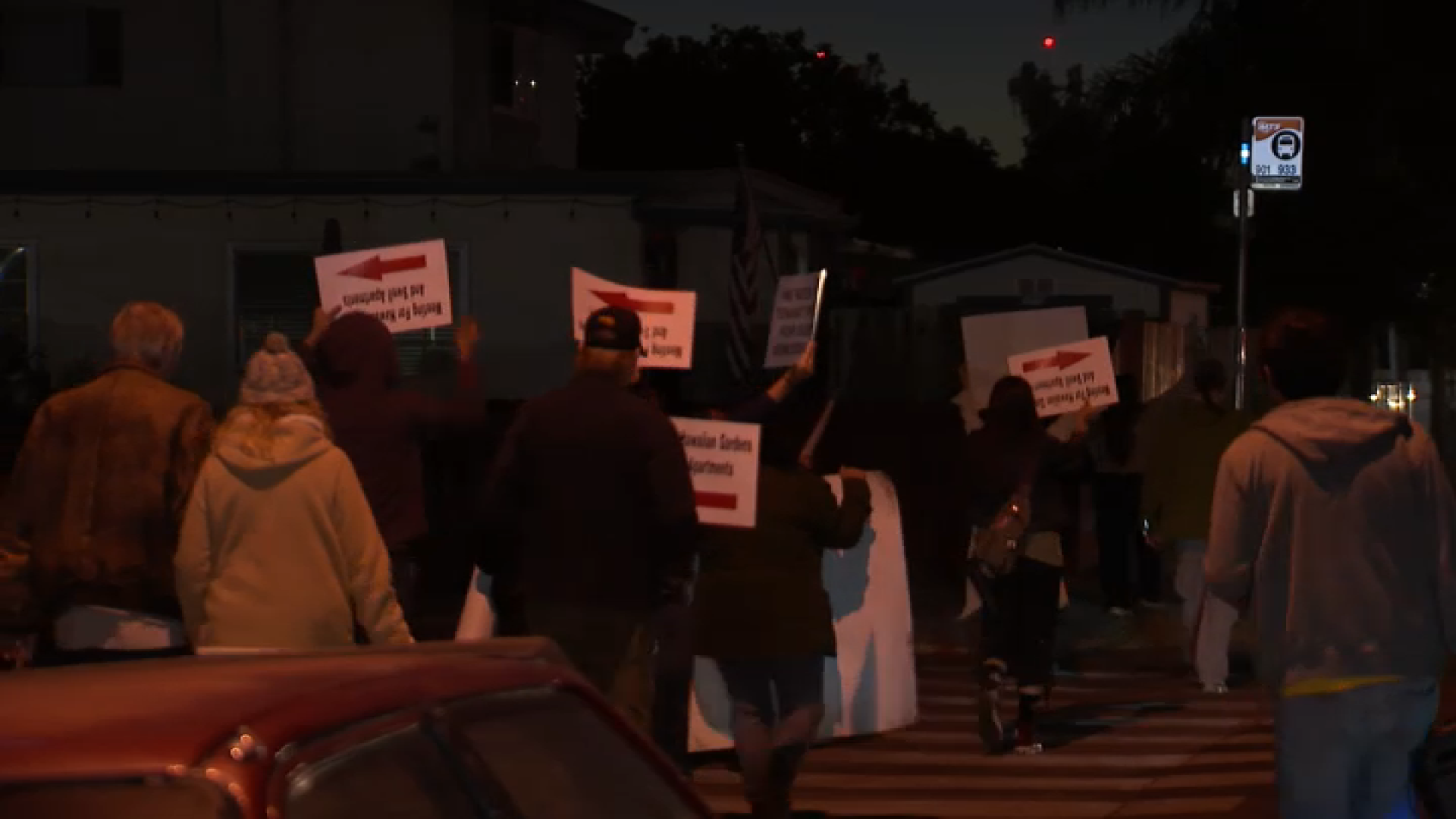Untold thousands of illegal immigrants live in public housing at a time when hundreds of thousands of citizens and legal residents are stuck waiting years for a spot.
Illegal immigrants make up a tiny portion of the 7.1 million people in federal housing, according to government statistics. But authorities may be unaware of thousands more, and critics say no illegal immigrant should get housing benefits.
The issue made headlines in November with news that Zeituni Onyango, an aunt of President-elect Barack Obama, was living in Boston public housing while in the country illegally.
The federal government, which funds the lion's share of the nation's public housing, requires only that illegal immigrants share a home with at least one family member who is in the country legally and pay their share of the rent.
While there are no hard numbers on illegal immigrants in public housing, the U.S. Department of Housing and Urban Development reports that 29,570 people -- 0.4 percent of all those in federally funded housing -- are "ineligible noncitizens." Some may be on temporary visas, such as highly educated workers or college students, but many are believed to be illegal immigrants.
Frank Bean, director of the University of California, Irvine's Center for Research on Immigration, Population and Public Policy, estimates that at least half of ineligible non-citizens -- about 15,000 people -- are illegal immigrants with U.S.-born children. Anyone born on U.S. soil is automatically a citizen, making their families eligible for federal housing.
The HUD tally does not offer a full picture of how many illegal immigrants are in public housing. It doesn't include housing funded by state and local governments, where eligibility requirements vary. Massachusetts, where Obama's aunt occupied one of about 50,000 state-funded units, doesn't ask immigration status under a 1977 federal consent decree in a class-action lawsuit that prohibits the state from denying the benefit to illegal immigrants.
Local
Other illegal immigrants may live in public housing without notifying authorities.
"It seems that the larger concern would be those who we don't know about who may be in the U.S. illegally and living in federal housing, yet never risk presenting themselves to HUD," said Jonathan Graffeo, a spokesman for Sen. Richard Shelby, R-Ala.
Some prospective tenants and advocates of immigration restrictions are angry about U.S. citizens waiting for housing aid that some number of illegal immigrants are enjoying.
New York City has about 260,000 people in line for housing aid. Chicago recently opened its waiting list for the first time in about 10 years and collected 259,000 names in four weeks for 40,000 slots.
"As long as that waiting list includes American citizens or legal immigrants, there's no reason an illegal alien should occupy any of that housing," said Rosemary Jenks, director of government relations for NumbersUSA, a group that supports curbs on immigration.
In San Diego, applicants are told they can expect to wait five to seven years.
"I don't think we should take a second seat to anyone," said Daryl Ford, who applied for housing aid last year and lives in a San Diego homeless shelter. "We send money to everyone else in the world but we're struggling here."
Some say the costs of illegal immigration in public housing are overstated.
Tanya Broder, an attorney with the National Immigration Law Center, said illegal immigrants are reluctant to seek government benefits because they keep low profiles. Even some legal immigrants shun public housing, fearing reprisals against them or their families, she said.
Illegal immigrants get free public education through high school and emergency medical care, but are denied many other services, like food stamps and broad Medicaid coverage.
Elliotte Skinner, 48, applied for public housing in San Diego in 2000 and lives in a cramped studio with a shared shower. He says focusing on illegal immigrants misses the point.
"There's too much blame on illegals for the country's problems," he said. "Their numbers are so small (in federally funded housing) they don't even make a difference. The real problem is we don't have enough affordable housing."
Elena Salmon, 45, lives at a San Diego home where about 30 women share four bathrooms while she waits for public housing, but she said it would be inhumane to deny housing to illegal immigrants.
"That's not what America is about," she said. "Why should we kick them out, even if they are taking up some space?"
HUD declined to break down the number of ineligible noncitizens by city or state.
The New York City Housing Authority reports 2,471 families with at least one ineligible noncitizen, or 0.9 percent of the 289,000 households on vouchers or in housing developments.
The San Diego Housing Commission reports 658 of the 37,120 people on federal housing vouchers are ineligible noncitizens, or 1.8 percent. The San Francisco Housing Authority has 148 ineligible noncitizens among its 28,611 people in federal housing, or 0.5 percent.
Housing agencies in Miami-Dade County and Chicago each reported serving less than 50 ineligible noncitizens. The Boston Housing Authority reports 288 of its 45,100 families on federal housing assistance are ineligible noncitizens, or 0.6 percent.
Onyango, the half-sister of Obama's late father, applied for public housing in 2002 while she was in the country legally seeking asylum from her native Kenya, said Lydia Agro, spokeswoman for the Boston Housing Authority, which has a waiting list of nearly 20,000 people.
Onyango moved into federally funded housing in 2003 and stayed there after 2004, when, The Associated Press learned, an immigration judge denied her asylum application and ordered her to leave the country.
Onyango transferred to an apartment funded only by the state, which cannot ask about immigration status under the court order. In November, her attorney said she was staying with relatives in Cleveland and would fight her deportation order.



